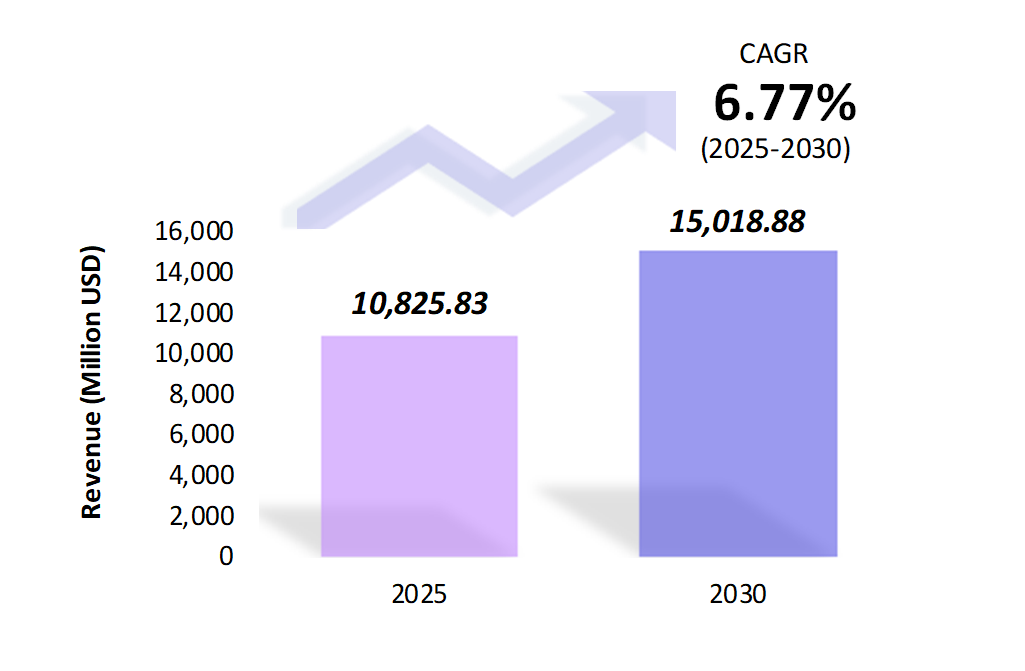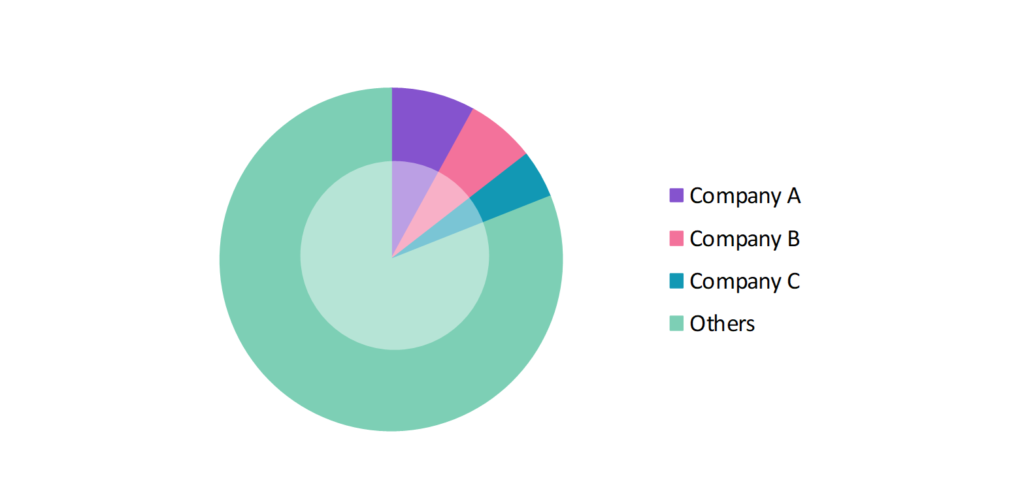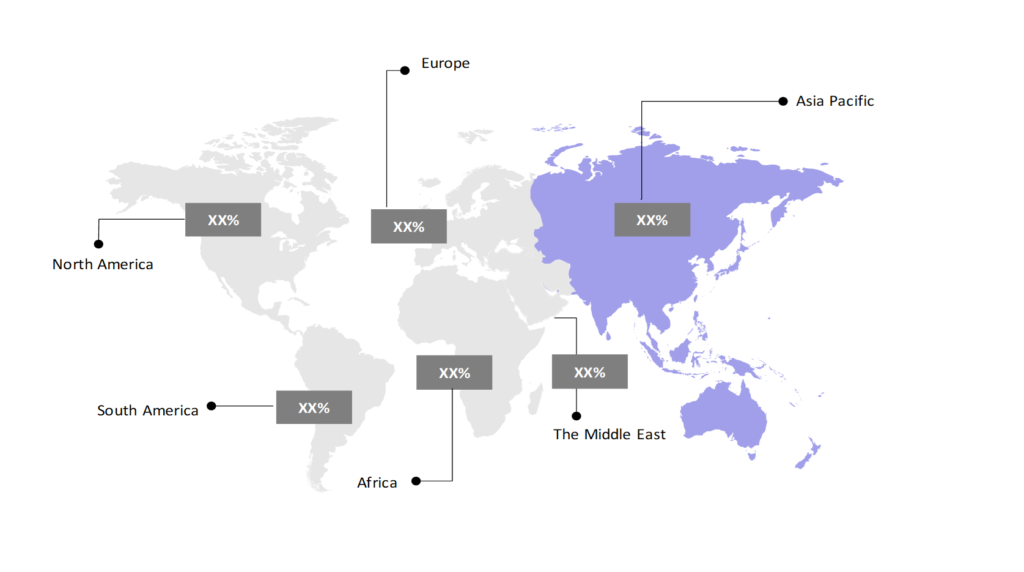Microcars Market Analysis: Growth, Size, Share & Future Trends (2024-2029)
The market report offers a detailed analysis segmented by Body Style (Hatchback, Sedan, SUV, Convertible); by Propulsion (Electric, Gasoline, Diesel, Hybrid); by Geography (North America, South America, Asia Pacific, Europe, The Middle East, Africa).
Outlook

- The microcars market is estimated to be at USD 10,825.83 Mn in 2025 and is anticipated to reach USD 15,018.88 Mn in 2030.
- The microcars market is registering a CAGR of 6.77% during the forecast period 2025-2030.
- Microcars are compact, fuel-efficient vehicles designed for urban commuting, gaining popularity in densely populated areas due to their ease of parking and low operational costs. The market is driven by urbanization, environmental awareness, and the need for sustainable transportation.
Request a free sample.
Ecosystem

- The participants in the global microcars industry focus on delivering compact, efficient vehicles with both traditional internal combustion engines (ICE) and electric variants.
- These companies focus on innovative designs and eco-friendly technologies to meet the growing demand for urban-friendly vehicles, along with strategic partnerships and collaborations to expand their market reach.
- Several important entities in the microcars market include Nissan Motor Co., Ltd.; Suzuki Motor Corp.; Toyota Motor Corp.; Renault Group; Hyundai Motor Co.; and others.
Ask for customization.
Findings
| Attributes | Values |
|---|---|
| Historical Period | 2019-2023 |
| Base Year | 2024 |
| Forecast Period | 2025-2030 |
| Market Size (2025) | USD 10,825.83 Mn |
| Market Size (2030) | USD 15,018.88 Mn |
| Growth Rate | 6.77% CAGR from 2025 to 2030 |
| Key Segments | Body Style (Hatchback, Sedan, SUV, Convertible); Propulsion (Electric, Gasoline, Diesel, Hybrid); Geography (North America, South America, Asia Pacific, Europe, The Middle East, Africa) |
| Key Vendors | Nissan Motor Co., Ltd.; Suzuki Motor Corp.; Toyota Motor Corp.; Renault Group; Hyundai Motor Co. |
| Key Countries | The US; Canada; Mexico; Brazil; Colombia; China; India; Japan; South Korea; The UK; Germany; Italy; Turkey; Kuwait; Saudi Arabia; Morocco; South Africa |
| Largest Market | Asia Pacific |
Get a free quote.
Trends
- Focus on Lightweight Materials: Automakers are increasingly using lightweight materials such as aluminum and advanced composites to improve the energy efficiency and range of microcars. This trend helps reduce vehicle weight, enhancing fuel efficiency and electric driving range.
- Autonomous Driving Integration: Autonomous driving technology is being tested in microcars as a potential solution for ride-sharing and urban transportation. While full autonomy is still in the testing phase, microcars offer a low-cost platform for autonomous trials due to their compact size and urban focus.
- Rise of Subscription Models for Microcars: There is a growing trend of subscription-based services for microcars, where consumers can use the vehicles without committing to full ownership. This model is becoming increasingly popular in cities where car ownership is less practical, and short-term use is more desirable. In 2023, Toyota launched a subscription model for its C+pod electric microcar, allowing urban dwellers to rent cars on a monthly basis.
Speak to analyst.
Catalysts
- Affordability and Low Running Costs: Microcars are more affordable to purchase and operate compared to larger vehicles. Their low fuel consumption, smaller engines, and lightweight construction make them cheaper to maintain and run, which is an attractive factor for cost-conscious urban dwellers.
- Government Incentives for Electric Vehicles: Governments worldwide are offering incentives and subsidies for electric vehicle purchases, making electric microcars more accessible to consumers. These incentives lower the upfront cost of electric microcars, encouraging adoption in both developed and developing markets.
- Rising Urban Congestion and Parking Solutions: As cities become more congested, microcars are becoming a practical solution for parking and maneuverability in tight spaces. This trend is especially prominent in densely populated cities with limited parking availability. In 2023, Renault introduced a microcar parking solution, integrating smart parking technology with its compact models to enhance urban mobility.
Inquire before buying.
Restraints
- Limited Comfort and Space: Microcars offer limited space and comfort, making them less appealing for longer commutes or family use. While they are ideal for short-distance city travel, their small size can be a deterrent for consumers looking for versatility.
- Limited Awareness and Acceptance in Developing Regions: In developing markets, awareness and adoption of microcars remain limited. Many consumers are unfamiliar with the benefits of microcars, and cultural preferences in some regions favor larger vehicles. Marketing and educational efforts are required to overcome this barrier.
- Supply Chain Disruptions: The global automotive industry has faced significant supply chain disruptions, impacting the production of microcars, especially electric models that rely on battery components. These disruptions have led to delays in production and delivery times, affecting market growth. In 2022, Toyota experienced delays in its C+pod production due to supply chain issues related to semiconductor shortages.
Personalize this research.
Hotspot

Explore purchase options.
Table of Contents
| 1. Introduction 1.1. Research Methodology 1.2. Scope of the Study 2. Market Overview / Executive Summary 2.1. Global Microcars Market (2019 – 2023) 2.2. Global Microcars Market (2024 – 2030) 3. Market Segmentation 3.1. Global Microcars Market by Body Style 3.1.1. Hatchback 3.1.2. Sedan 3.1.3. SUV 3.1.4. Convertible 3.2. Global Microcars Market by Propulsion 3.2.1. Electric 3.2.2. Gasoline 3.2.3. Diesel 3.2.4. Hybrid 4. Regional Segmentation 4.1. North America 4.1.1. The US 4.1.2. Canada 4.1.3. Mexico 4.2. South America 4.2.1. Brazil 4.2.2. Colombia 4.2.3. Rest of South America 4.3. Asia Pacific 4.3.1. China 4.3.2. India 4.3.3. Japan 4.3.4. South Korea 4.3.5. Rest of Asia Pacific 4.4. Europe 4.4.1. The UK 4.4.2. Germany 4.4.3. Italy 4.4.4. Rest of Europe 4.5. The Middle East 4.5.1. Turkey 4.5.2. Kuwait 4.5.3. Saudi Arabia 4.5.4. Rest of the Middle East 4.6. Africa 4.6.1. Morocco 4.6.2. South Africa 4.6.3. Rest of Africa 5. Value Chain Analysis of the Global Microcars Market 6. Porter Five Forces Analysis 6.1. Threats of New Entrants 6.2. Threats of Substitutes 6.3. Bargaining Power of Buyers 6.4. Bargaining Power of Suppliers 6.5. Competition in the Industry 7. Trends, Drivers and Challenges Analysis 7.1. Market Trends 7.1.1. Market Trend 1 7.1.2. Market Trend 2 7.1.3. Market Trend 3 7.2. Market Drivers 7.2.1. Market Driver 1 7.2.2. Market Driver 2 7.2.3. Market Driver 3 7.3. Market Challenges 7.3.1. Market Challenge 1 7.3.2. Market Challenge 2 7.3.3. Market Challenge 3 8. Opportunities Analysis 8.1. Market Opportunity 1 8.2. Market Opportunity 2 8.3. Market Opportunity 3 9. Competitive Landscape 9.1. Nissan Motor Co., Ltd. 9.2. Suzuki Motor Corp. 9.3. Toyota Motor Corp. 9.4. Renault Group 9.5. Hyundai Motor Co. 9.6. Company 6 9.7. Company 7 9.8. Company 8 9.9. Company 9 9.10. Company 10 |
Know the research methodology.
Microcars Market – FAQs
1. What is the current size of the microcars market?
Ans. In 2025, the microcars market size is USD 10,825.83 Mn.
2. Who are the major vendors in the microcars market?
Ans. The major vendors in the microcars market are Nissan Motor Co., Ltd.; Suzuki Motor Corp.; Toyota Motor Corp.; Renault Group; Hyundai Motor Co.
3. Which segments are covered under the microcars market segments analysis?
Ans. The microcars market report offers in-depth insights into Body Style, Propulsion, and Geography.
